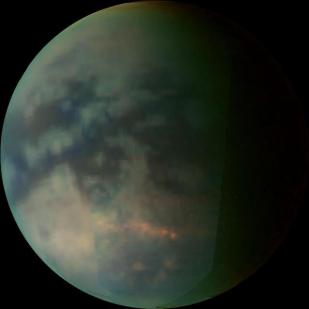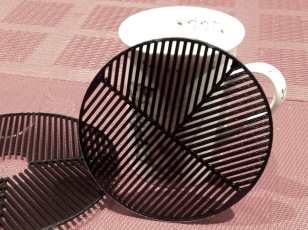
Image: The Clouds Over Titan : Courtesy of Nasa.gov
We must become a multi-planetary species. Our fate in the cosmos will be determined by how soon we are able to follow in the path of our robotic explorers, Voyager, Galileo and Cassini. It is imperative that we push on at a more rapid pace toward the related discoveries of space travel and space health before governmental spending is too overwhelmed by the costs of remedying the ailments of a sadly mismanaged Earth.
Directed and sufficient funds must now be allocated by government and not only left up to rich entrepreneurs, to facilitate more rapid discoveries which are related to our autonomous and sustained habitation of space. It is not enough to provide more funds but to also promote an overall “world plan” and to instill cooperation by all businesses and countries. In this manner our resources as a whole will be best used and prevent needless wastage of time, effort and money. This endeavour must be paralleled at the same time with a unified and significant effort of sustaining our beautiful Earth. It is imperative that these two tasks have no borders, no longer to be considered an unspoken race of supremacy. We no longer have the luxury of time to be involved with the comparatively petty rivalries of competition. Our long term continued existence and all that we have thus far accomplished is now at risk.
It has been criticized that had we not taken the route of developing the Space Station so extensively, we would have probably sent humans to Mars by now. There is argument for both cases, hind-site playing a big part. In any case the goal should now be at establishing outposts beyond Earth, served only to be “stepping stones” to a next world that is habitable for man. Terraforming Mars is a long term and expensive project that some say could take a 1000 years to accomplish. This may not be immediately, or ever required depending on the developments in space travel in the near future. What is important is that we go to Mars with the idea of establishing a liveable environment for a limited number of specialists, not a large population. These pioneers will have the task of building the next space vehicle which will propel man to our next home.
As was commented of the Space Station, let it not be said that too many resources were spent on long term endeavours such as terraforming Mars. Let us be more focused and unified in the future on the goals of developing new forms of space travel, finding solutions for the related physical and health consequences of low gravity and radiation in space and choosing a world more easily and less expensively developed to sustain our existence, other than Mars. Many scientists say that Titan, a moon of Saturn is the nearest and best candidate.
